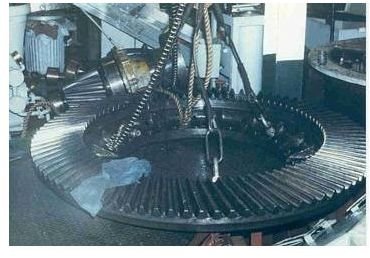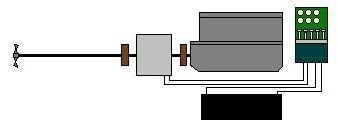Propulsion System Types Used On Ships
Introduction
The main engine of a ship is connected to its propeller with the help of a shaft. This whole system, along with other vital machineries is known as the ship propulsion system. The type of propulsion system used in a ship depends on several factors such as speed, power, ship type etc.
Since the time man started using ships, various types of propulsion systems have been used depending on the ship’s requirement. In this article, we will try to have a brief overview of the kind of propulsion systems that are available in the market and their selection procedure according to the requirement.
Direct drive propulsion system
Direct propulsion system is the most commonly used system on ships. Direct propulsion system is an invariable choice for low speed diesel engines and has a very basic arrangement. It consists of a propeller, which is connected to the main engine with the help of the shaft. Maneuvering of the ship is done by controlling the speed of the main engine and by changing the direction of rotation of the propeller. Initially this system was used in almost all the ships. Direct drive propulsion system is generally used by ships plying in confined waters and in areas wherein higher speeds are not allowed.
Geared Drive Propulsion System
Geared drive propulsion system is extensively used nowadays. The system can be associated with almost all kinds of prime movers. Gearing has more than one function; it reduces the number of revolutions from the engine output in such a way that the system can derive maximum propeller efficiency. Gearing can also be used to connect one shaft to two prime movers or can be used to share power between two shafts or to connect a shaft alternator to the shaft connected to the propeller.
The reversing can also be done easily by using controlled pitch propeller. However, gearing can make the task way easier.

Electrical propulsion system
Electrical propulsion was used extensively during the days of Second World War, when the ships had steam turbines as their prime movers, along with electrical drives and large gearboxes. However, nowadays most electrical drives have medium or high speed diesel engines as their prime movers.The only disadvantage of the electrical drive is that it is extremely expensive in the first cost when compared with geared drive. This is mainly because of lower mechanical efficiency, which leads to more fuel consumption and cost.
In earlier times, DC motors were used with the electrical drives and the ships used to have completely separate electrical system for propulsion and other purposes. But after the invention of marine type thyristor converters the ships are able to connect all their machineries to one single electrical system, just as in a power station. Thus the power for the propulsion system, marine auxiliary machineries, and ship’s hotel load all comes from a common energy pool. Generators are also used with the main engine to get the near peak efficiency.
Also, combining all the electrical power sources into one system has drastically helped in reducing the extra costs and method is chosen for almost all the ships now. The system is suitable especially for ships with high power requirements such as large cruise liners and specialist ships such as research vessels, ice breakers, fish factory ships, oil production and drilling vessels, cable laying ships etc. An electrical drive is thus advantageous for a ship that has a large non propulsion electrical load or for a ship wherein the number of propulsion devices are installed throughout the ship e.g. dynamically positioned offshore vessel.
Apart for this, advantages of electrical propulsion also include drastic reduction in noise and vibration levels, power for the occasional use of bow thrusters without the help of any other power source, and smooth operate on very low speeds with high level of reliability. Moreover, an electrical propulsion system can be easily maintained and repaired. It provides the facility of using all machineries on one fuel type. The requirement of spares is also absolutely low. The system can work on low grade fuels, increasing the cost efficiency of the whole operation.
References
Practical ship design by D.G.M Watson
Images:
